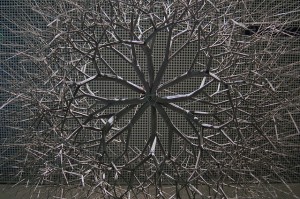
San Francisco artist and arts advocate Ruth Asawa died Monday night. She was 87.
Asawa was known for her wire sculpture and public commissions, as well as her activism in education and arts. She was known as the "fountain lady" because so many of her fountains are on public view.
“Ruth Asawa was a well-known and respected artist recognized all over the world for her innovative artwork," Mayor Ed Lee said in a statement. "Her passion for educating San Francisco’s youth and families made her a true champion of the arts for our entire City."
Asawa's name was in the headlines recently when a proposed Apple store in downtown San Francisco threatened her "Hyatt Fountain on Union Square," but the city rejected Apple's plans and told the company to redo them to make sure the fountain remains.
In addition to the fountain, several of Asawa's commissioned sculptures for public places endure, including the Japanese American Internment Memorial in San Jose and the Andrea Mermaid Fountain in San Francisco. The de Young Museum, which honored Asawa with a career retrospective in 2006-07, has dedicated the ground floor lobby of its tower to an ongoing display of her work.